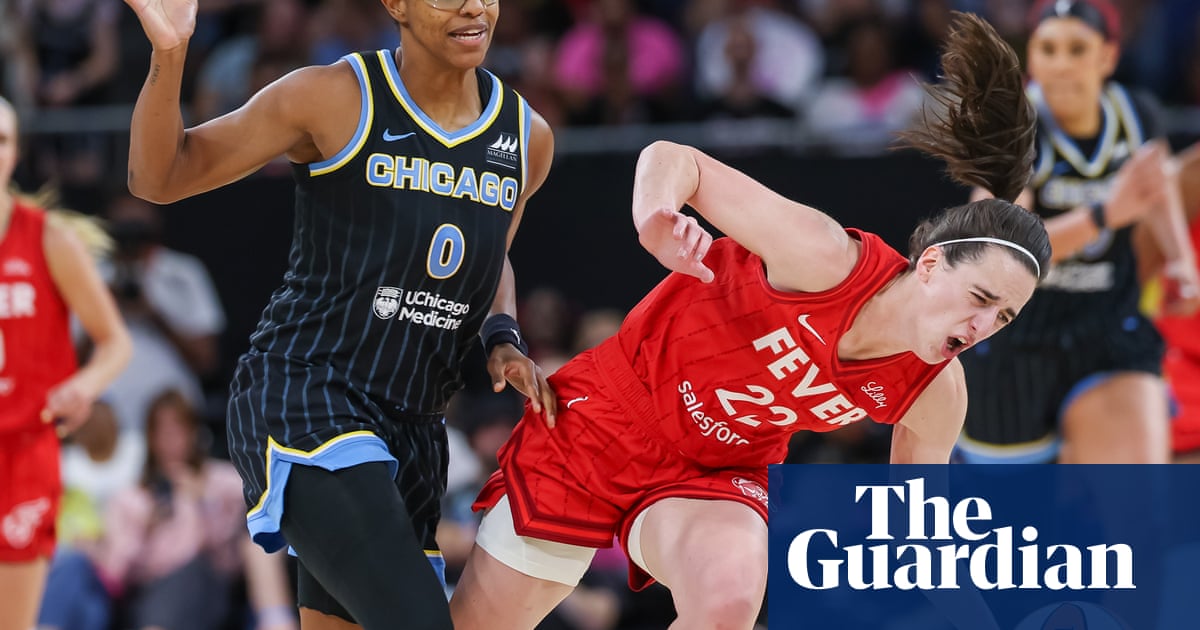Last July, Las Vegas Aces star A’ja Wilson took a shot to the face from Seattle’s Nneka Ogwumike that left her nose gushing. Wilson later said she’d never seen so much of her own blood. It didn’t affect her game too much though: she finished with 24 points and 20 rebounds,telling reportersof the jab, “I think it made me great.”
When Caitlin Clark entered the league in the same season and was almost immediately swattedaround like a fruit flyby veterans with years of experience and plenty of size on her, she didn’t complain (though many of her fans sure did). Clark came back this seasonbigger and better, delivering her own message to the veterans who knocked her around as a rookie.
Wilson and Clark’s stories came to mind after Kelsey Plumlit into the refsafter the Los Angeles Sparks’ loss to the Golden State Valkyries on Monday night. “I got scratches on my face, I got scratches on my body, and these guards on the other team get these ticky-tack fouls, and I’m sick of it. I get fouled like that on every possession,” she said.Plum likely had a point – the Valkyries had few other ways to slow her – but her frustration tapped into a broader narrative.
This season is young and has already been dogged by complaints that the league is too physical (whatever that means), complaints that boggle the mind when one considers the way theWNBAhas always been played.
“Physicality hasalwaysbeen a WNBA thing,” says Jordan Robinson, who hosts The Women’s Hoop Show alongside Sheryl Swoopes, and is writing a book on the history of women’s basketball. “It’s a sports thing! It’s been a women’s basketball thing since the beginning.” The first recorded women’s basketball game was in 1892 – and by all accounts, it wastough.
People in 1892 were “surprised at women playing basketball in general”, she says, “and later in the 1920s were appalled that women were playing a physical sport – and then! – on top of that, they were aggressive.”
At various points in history, women’s courts were divided into sections. The thinking was that it would keep players from sweating too much or using too much energy, Robinson says. The women’s game didn’t even include unlimited dribbling until the 1960s, out of a head-scratching belief that the players would get too tired.
The idea that the women’s game isn’t, or shouldn’t be, physical confounds the mind, longtime WNBA reporter and author of Becoming Caitlin Clark,Howard Megdal, says. “This is a league of skill and strength and speed – it’s amazing – and to me, that is a great thing. This is something I enjoy.” In other words, a WNBA without physical confrontation is a WNBA that far fewer fans would actually want to watch.
Robinson agrees. “When I watch the WNBA, when I watch professional athletes at the very top of their craft, I see competitors, point blank,period.” To Plum’s point about the fouls called (or not called) during Monday’s game, Robinson says, “What she’s saying is, ‘I’m going to bulldoze through you if I have to, but, hey, there are actually rules in place so I don’t get hurt.’”
Anyone who believes the WNBA has somehow ramped up the physicality only in recent years needs only look back on the league’s history. South Carolina Gamecocks head coach Dawn Staley is known forher fiery sideline responsesduring crucial games, responses that she certainly displayed when she was in the W. Staley, her former Houston Comets teammate Tina Thompsononce said, “play[ed] with an unbelievable toughness” due to her 5ft 6in size.
If anything, the physical nature of the WNBA hasdecreasedin recent years as more player protections and rules have been put into place. In an interview withSports Seriouslythis week, Diana Taurasi attributed the increased attention on physicality to “more eyeballs on the game” but added that players who have been in the league for a decade or more would agree it’s “less physical” than ever before.
Swoopes would likely agree. During her 10th season in the league in 2006, the longtime Comets great referenced the very problem that’s still being discussed today. “As far as the physicality of it, I’m glad I’m not a referee because you just never know. Sometimes they’re calling every little bitty thing and you’ve got people complaining about that, ‘Because that’s not what the fans want to see,’”she saidat the time. “Now, it’s very physical and people are complaining about that, ‘It’s too physical. That’s not what the coaches want; that’s not what the players want.’ So you’ve gotta give and take. You’ve got to give a little and take a little.”
If hard contact makes some fans uncomfortable, maybe it’s time they found another pastime. Of course, one would be hard-pressed to find a professional women’s sport that isn’t just as physical (or even more physical) than the WNBA; American soccer star Heather O’Reillyonce praisedAbby Wambach as her “dream player” after the latter had her head stapled back togetherwhile still on the pitch. Even a sport that’s often considered “feminine” can demand a perseverance and grid that would test the hardest NFL player (just ask gymnast Kerri Strug).
Or maybe it’s time for women’s basketball fans to leap into 2025, a moment in space and time in which we recognize professional female athletes go just as hard as their male counterparts – and we can finally stop wringing our hands and enjoy every aspect of the game, even the hits.
